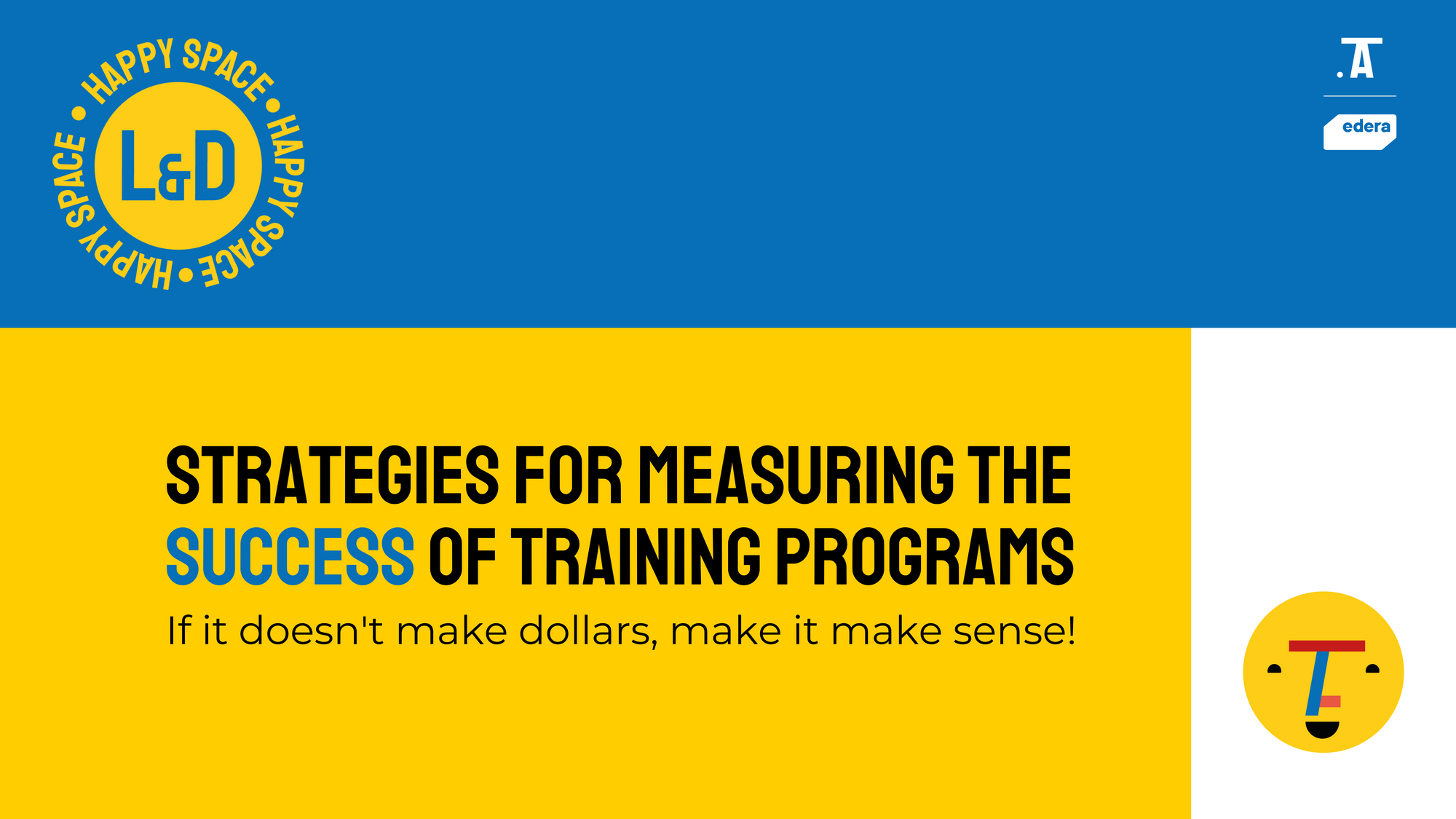Strategies for Measuring the Success of Training Programs: Key Takeaways from 💛 L&D Happy Space #19!
Maximizing the ROI of the training programs requires a comprehensive approach that aligns learning initiatives with organizational goals, measures their impact through data-driven insights, and fosters a culture of continuous improvement.
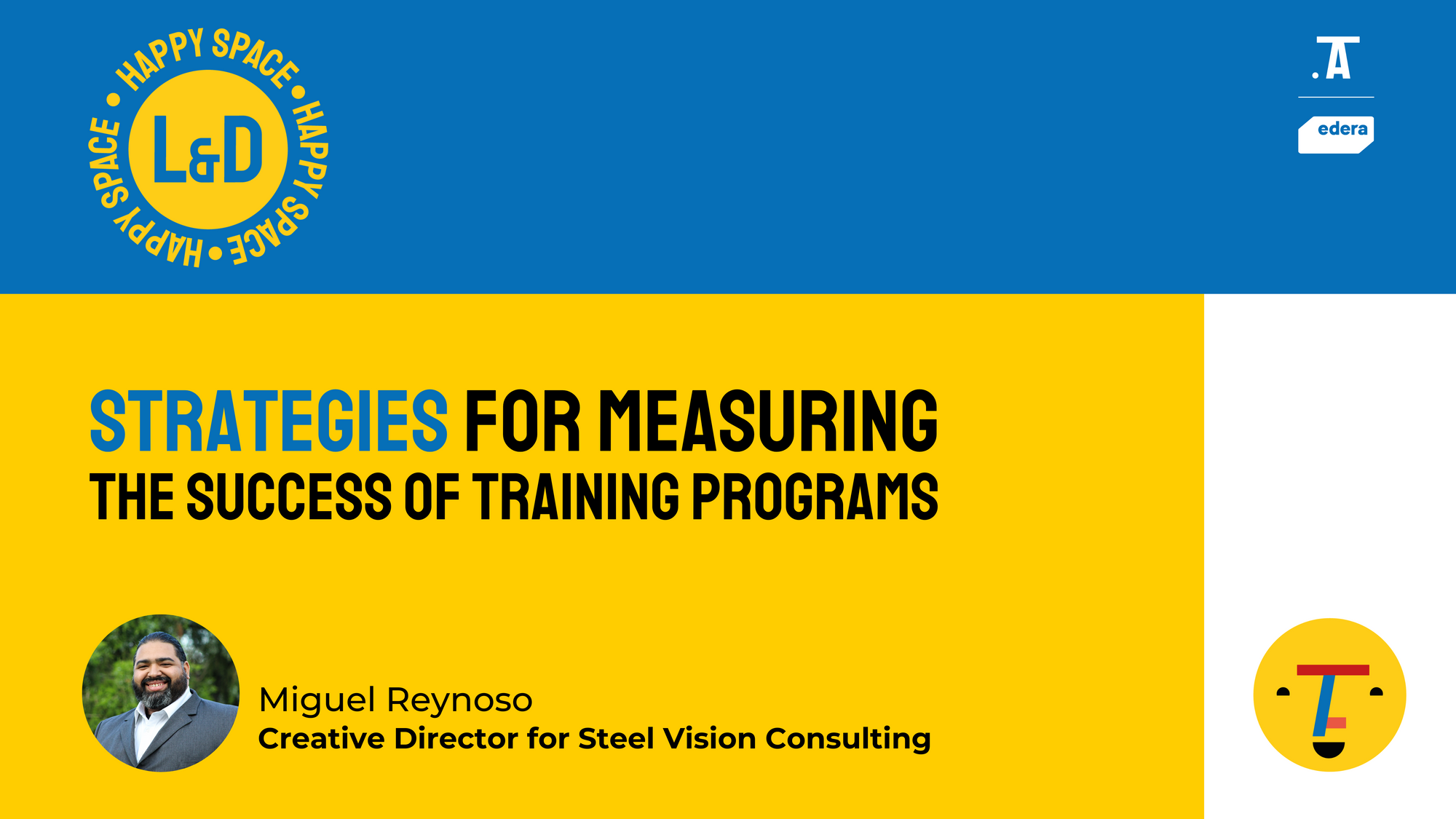
In a recent webinar, corporate learning consultant Miguel Reynoso shared actionable strategies to help learning and development (L&D) professionals ensure their training initiatives align with organizational goals, provide measurable results, and deliver a tangible ROI.
Guide to Measuring Training Success
1. Optimization
- Conduct audience analysis and evaluate training modalities based on costs, benefits, and financial impact.
- Define modality, duration, and intended outcomes to estimate costs and potential ROI.
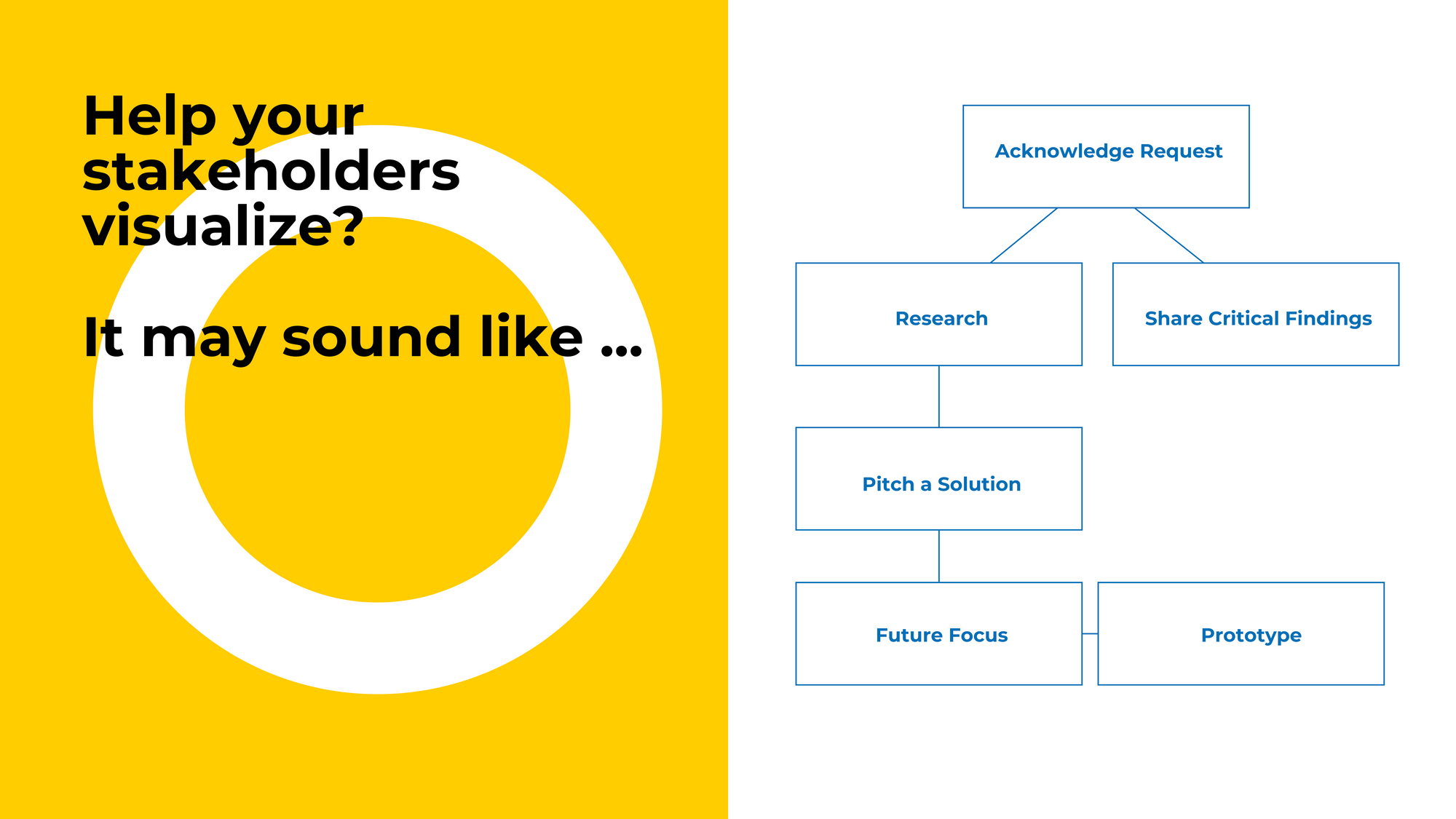
2. Alignment
- Identify company's fiscal goals like revenue growth, cost reduction, and ROI.
- Map training recommendations to these goals, showcasing their contributions.
- Build trust as a business partner by aligning learning programs with fiscal objectives.
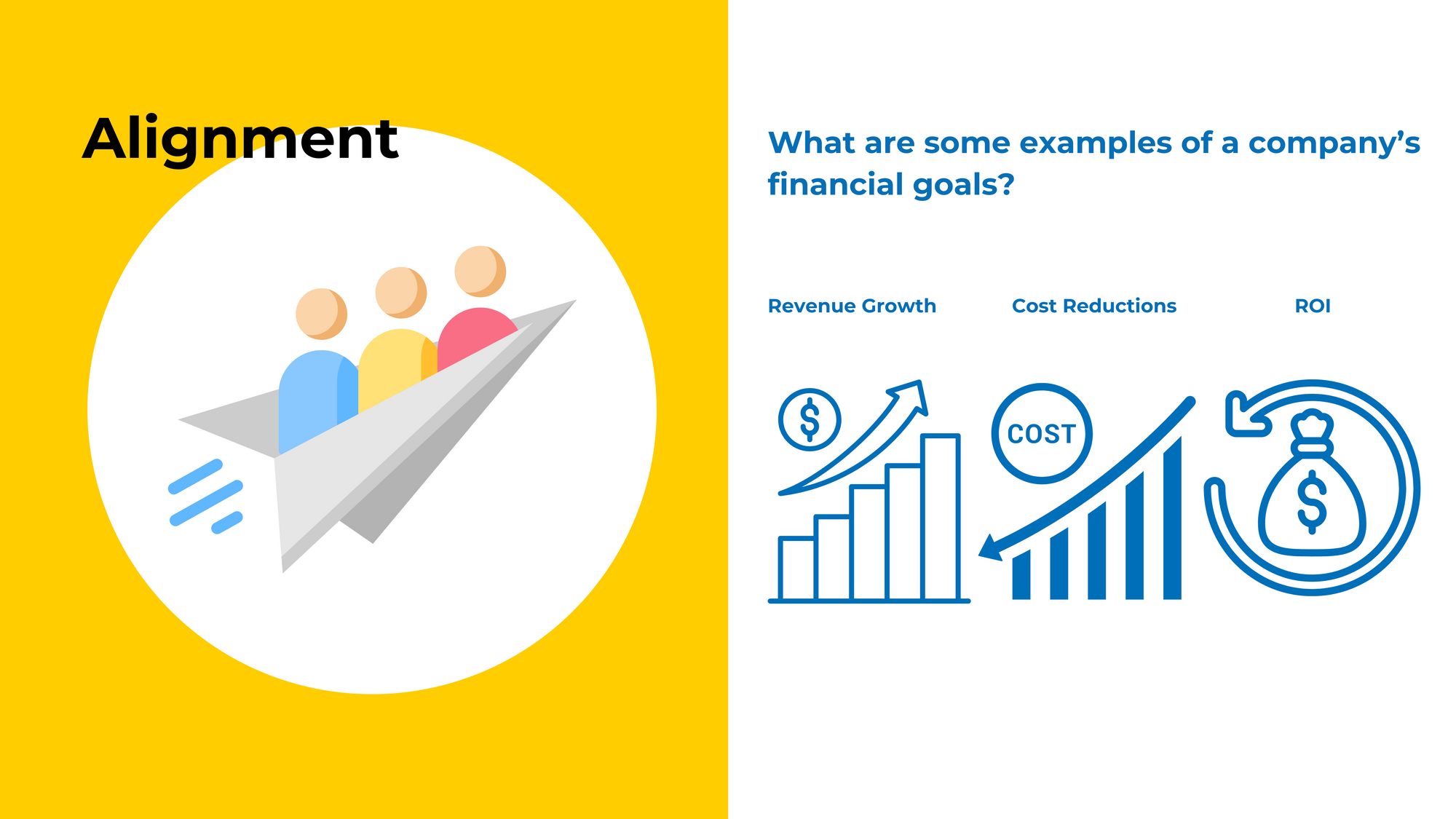
3. Congruence
- Use tools like Bloom's Taxonomy, AI Course Builders, or the KSA (Knowledge, Skills, Abilities) model to draft learning outcomes aligned with business goals.
- Prototype and seek stakeholder feedback to ensure alignment and buy-in.
"Leveraging Workademy's AI Course Builder streamlines the process of creating learning outcomes that are aligned with the business objectives, saving countless hours and ensuring the training programs are focused on driving real impact." - Miguel Reynoso, Founder, Steel Vision Consulting
To try out Workademy's AI-powered course outline generation, proceed to this link: https://theworkademy.com/ai
4. Measurement
- Leverage data analysis tools, observation techniques, and financial reporting cycles.
- Integrate training KPIs into quarterly business reviews and showcase their impact.
- Highlight employee success stories, promotions, and knowledge-sharing resulting from training.
5. Evaluation
- Implement feedback loops, follow-up sessions, and safe environments for honest feedback.
- Encourage learners to maintain portfolios showcasing their work and track progress over time.
- Leverage technologies like virtual reality and simulations to continuously enhance training effectiveness.
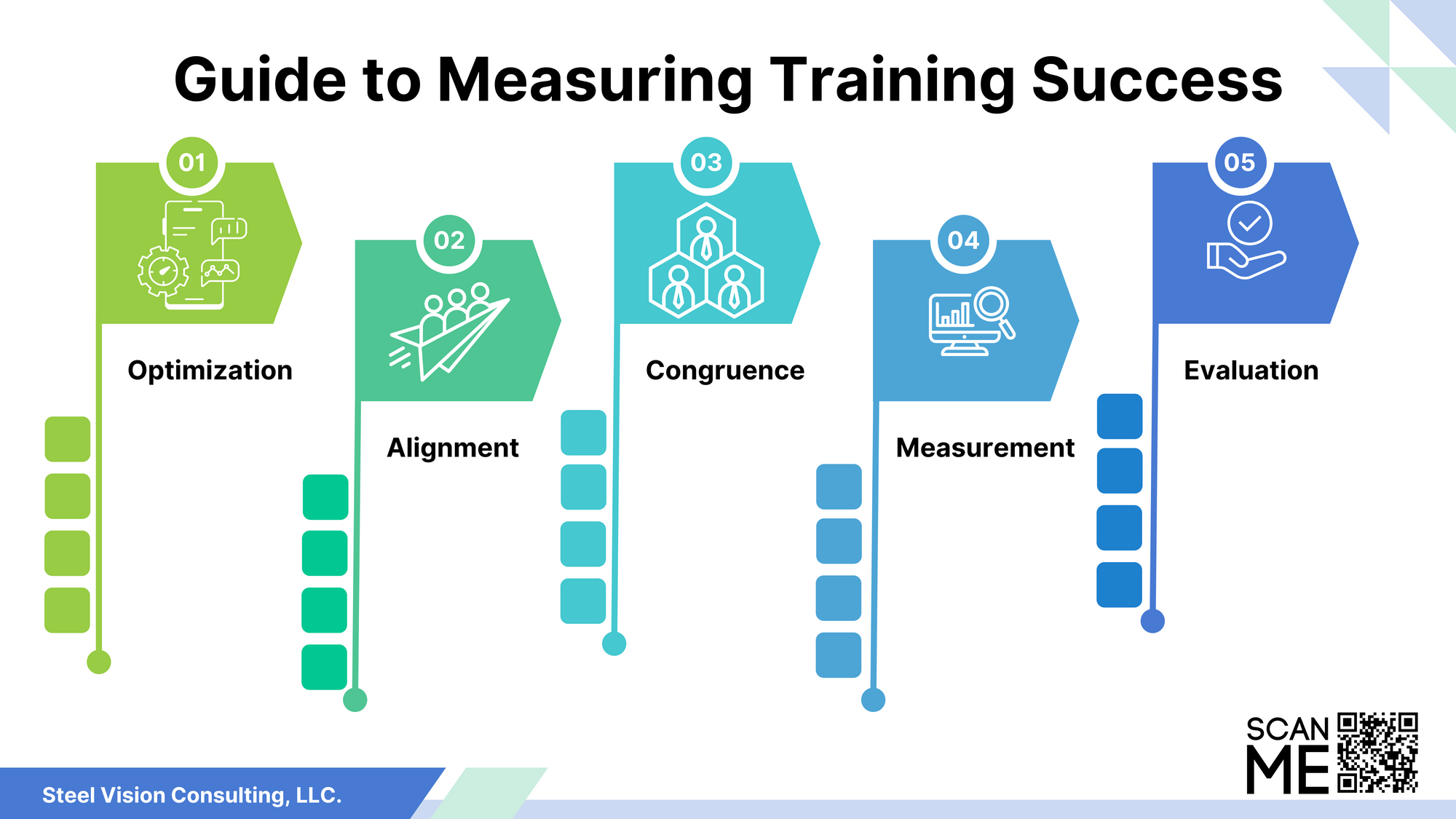
Conclusion
Maximizing the ROI of the training programs requires a comprehensive approach that aligns learning initiatives with organizational goals, measures their impact through data-driven insights, and fosters a culture of continuous improvement. By implementing the strategies outlined in this article, professionals can optimize training modalities, align learning outcomes with business objectives, leverage technology for enhanced effectiveness, and position themselves as a strategic partner within the organization.
👇 Click to watch the full webinar
